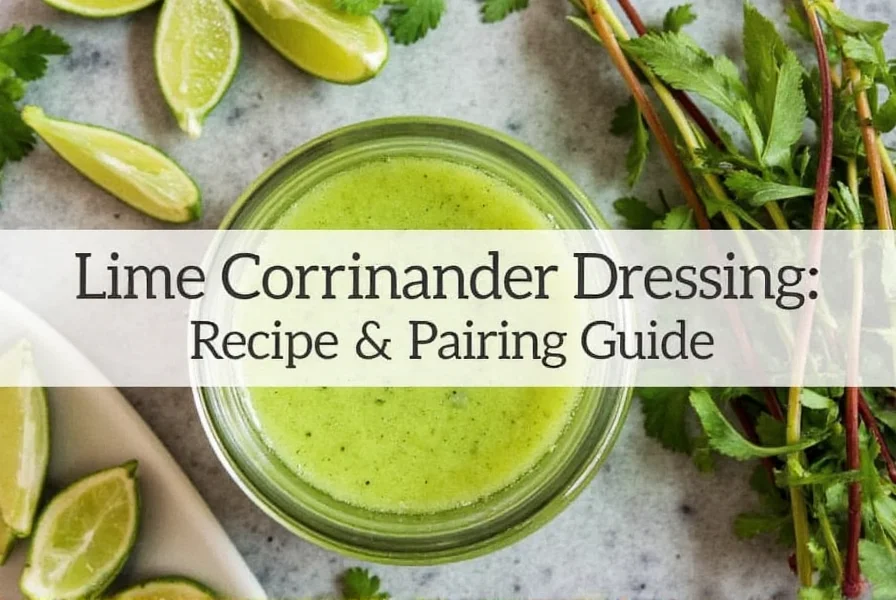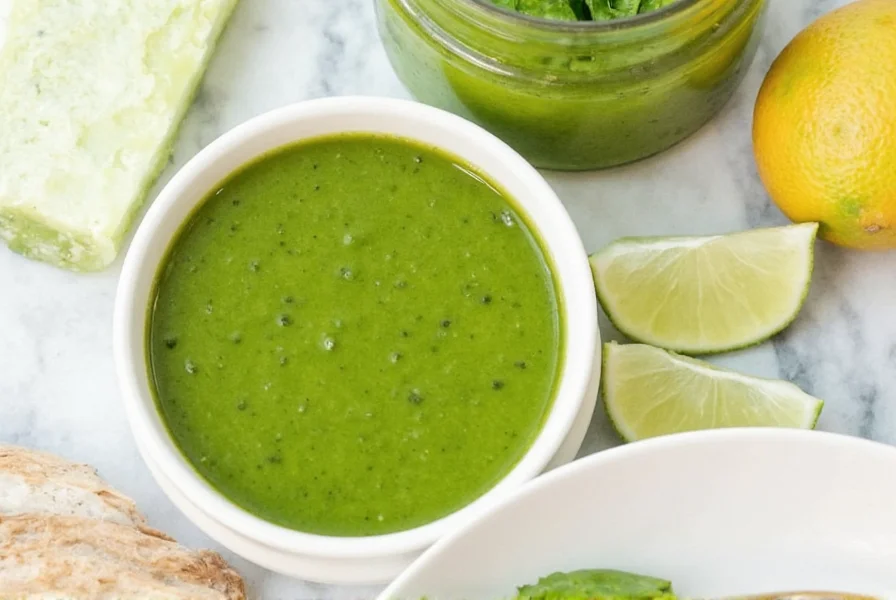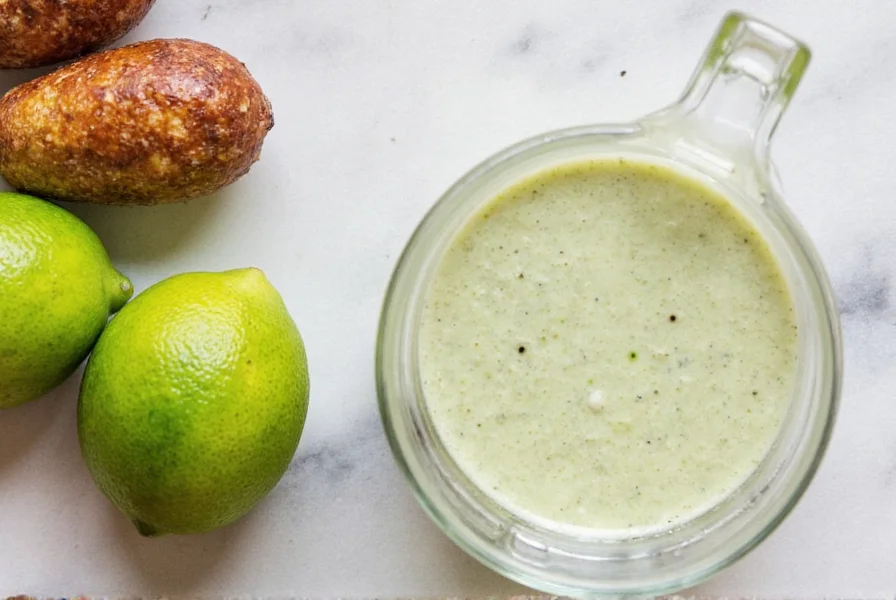Lime coriander dressing brings a refreshing zing to countless dishes with its perfect balance of citrus brightness and herbal notes. This homemade dressing outperforms store-bought versions with its vibrant flavor and absence of preservatives. Whether you're preparing a quick weeknight dinner or entertaining guests, this versatile condiment elevates simple ingredients into memorable meals.
The Essential Homemade Lime Coriander Dressing Recipe
Creating authentic lime coriander dressing requires just seven simple ingredients you likely already have in your pantry. The magic happens when fresh ingredients combine to create a dressing far superior to any bottled alternative. For the best results, always use freshly squeezed lime juice rather than bottled—the difference in flavor is remarkable.
| Ingredient | Amount | Key Function |
|---|---|---|
| Fresh lime juice | 1/4 cup | Provides bright acidity and citrus foundation |
| Fresh cilantro (coriander leaves) | 1 cup packed | Delivers distinctive herbal flavor |
| Extra virgin olive oil or avocado oil | 1/2 cup | Creates emulsion and smooth texture |
| Garlic | 1-2 cloves | Adds depth and complexity |
| Honey or maple syrup | 1 tsp | Balances acidity |
| Ground coriander | 1/2 tsp | Enhances herbal notes |
| Sea salt | To taste | Amplifies all flavors |
Step-by-Step Preparation Guide
Follow these simple steps to create restaurant-quality lime coriander dressing at home:
- Wash and thoroughly dry 1 cup of fresh cilantro, removing thick stems
- Combine cilantro, 1/4 cup fresh lime juice, 1-2 garlic cloves, 1 tsp honey, 1/2 tsp ground coriander, and salt in a blender
- Blend on high until completely smooth (about 30 seconds)
- With blender running, slowly drizzle in 1/2 cup oil until emulsified
- Taste and adjust seasoning—add more lime for acidity or honey for balance
- Transfer to an airtight container and refrigerate for 30 minutes before serving

Ingredient Insights and Smart Substitutions
Understanding each component helps you customize your homemade lime coriander dressing recipe to perfection. Fresh cilantro makes the difference between good and exceptional dressing—dried cilantro won't provide the same vibrant flavor. When cilantro isn't available, flat-leaf parsley combined with a pinch of cumin can work in a pinch, though the flavor profile will differ.
For those wondering how to make coriander dressing with lime without traditional oil, consider these alternatives:
- Replace half the oil with Greek yogurt for a creamy cilantro lime dressing without compromising flavor
- Use avocado as a base for a dairy-free creamy version
- For oil-free dressing, increase Greek yogurt and add a tablespoon of tahini
Perfect Pairings: What to Serve with Lime Coriander Dressing
This versatile dressing shines across multiple cuisines. The best lime coriander dressing for salads features slightly less oil for a lighter consistency, while versions for tacos benefit from additional garlic and a touch more honey.
Consider these pairings for optimal flavor experiences:
- Mexican cuisine: Drizzle over fish tacos, enchiladas, or as a dip for taquitos
- Salads: Toss with mixed greens, avocado, jicama, and black beans
- Grilled proteins: Marinate chicken breasts or shrimp before grilling
- Vegetables: Toss with roasted sweet potatoes, zucchini, or asparagus
- Grain bowls: Perfect finishing touch for quinoa or rice-based bowls
Storage Guidelines and Shelf Life
Proper storage maintains the fresh flavor of your lime coriander vinaigrette ingredients. Store in an airtight container in the refrigerator for up to 5 days. The dressing may separate—simply shake or stir before using. For longer storage, freeze in ice cube trays then transfer cubes to freezer bags for up to 3 months.
Lime coriander dressing storage tips include:
- Always use clean utensils when serving to prevent contamination
- Keep away from strong-smelling foods that might affect flavor
- If using yogurt, consume within 3 days for optimal freshness
- Freeze in portion sizes matching your typical usage
Popular Variations for Dietary Needs
Adapt this basic recipe to accommodate various dietary preferences while maintaining authentic flavor. For a cilantro lime dressing for tacos with extra kick, add 1/4 teaspoon of chipotle powder or a few dashes of hot sauce. Those following specific dietary patterns will appreciate these modifications:
- Vegan version: Ensure sweetener is maple syrup instead of honey
- Dairy-free creamy option: Use avocado or tahini instead of yogurt
- Lower fat version: Reduce oil to 1/4 cup and add 2 tablespoons vegetable broth
- Extra herbal version: Add 2 tablespoons fresh mint or basil

Avoiding Common Preparation Mistakes
Even simple recipes can go wrong without proper technique. The most frequent error when making fresh coriander dressing recipe is using bottled lime juice, which lacks the bright, complex flavor of fresh. Another common issue is not balancing the acidity properly—when in doubt, add lime juice gradually while tasting.
Professional chefs recommend these troubleshooting tips:
- If dressing is too acidic, add more sweetener or oil, 1 teaspoon at a time
- If too bland, increase garlic or add a pinch of cumin
- For better emulsion, ensure all ingredients are at room temperature
- When substituting oils, avoid strongly flavored varieties that overpower cilantro
Frequently Asked Questions
Can I make lime coriander dressing without a blender?
Yes, you can make lime coriander dressing without a blender by finely mincing cilantro and garlic, then vigorously whisking all ingredients together. The texture will be less smooth but flavor remains excellent. For best results when making cilantro lime dressing without yogurt or dairy, ensure ingredients are at room temperature before combining.
Why does my lime coriander dressing separate?
Lime coriander dressing separation occurs when the emulsion breaks, typically from adding oil too quickly or using cold ingredients. To prevent this, add oil slowly while blending continuously. If separation happens, blend again with 1 teaspoon of mustard or Greek yogurt to re-emulsify. Properly made lime coriander vinaigrette ingredients should maintain consistency for several hours.
How can I make my dressing more vibrant green?
For a brighter green lime coriander dressing, use only the leaves of fresh cilantro (no stems), ensure lime juice is freshly squeezed, and blend thoroughly. Adding a small handful of spinach won't significantly alter flavor but boosts color. Avoid over-blending which can cause oxidation and dull the color. The best lime coriander dressing for salads maintains its vibrant hue when properly prepared.
Can I use dried cilantro instead of fresh in this dressing?
Dried cilantro lacks the vibrant flavor and aroma of fresh, making it unsuitable for authentic lime coriander dressing. If fresh isn't available, substitute with 2 tablespoons flat-leaf parsley plus 1/4 teaspoon cumin, though the flavor profile will differ significantly. For the most authentic homemade lime coriander dressing recipe, fresh cilantro is essential—dried herbs simply cannot replicate its distinctive flavor.
What's the difference between cilantro and coriander in dressing recipes?
In culinary terms, cilantro refers to the fresh leaves and stems of the coriander plant, while coriander typically means the dried seeds. For lime coriander dressing, you need fresh cilantro leaves (not the seeds) as the primary herb. Ground coriander (the seed) is used sparingly as a supporting flavor. Understanding this distinction is crucial for authentic how to make coriander dressing with lime recipes.











 浙公网安备
33010002000092号
浙公网安备
33010002000092号 浙B2-20120091-4
浙B2-20120091-4